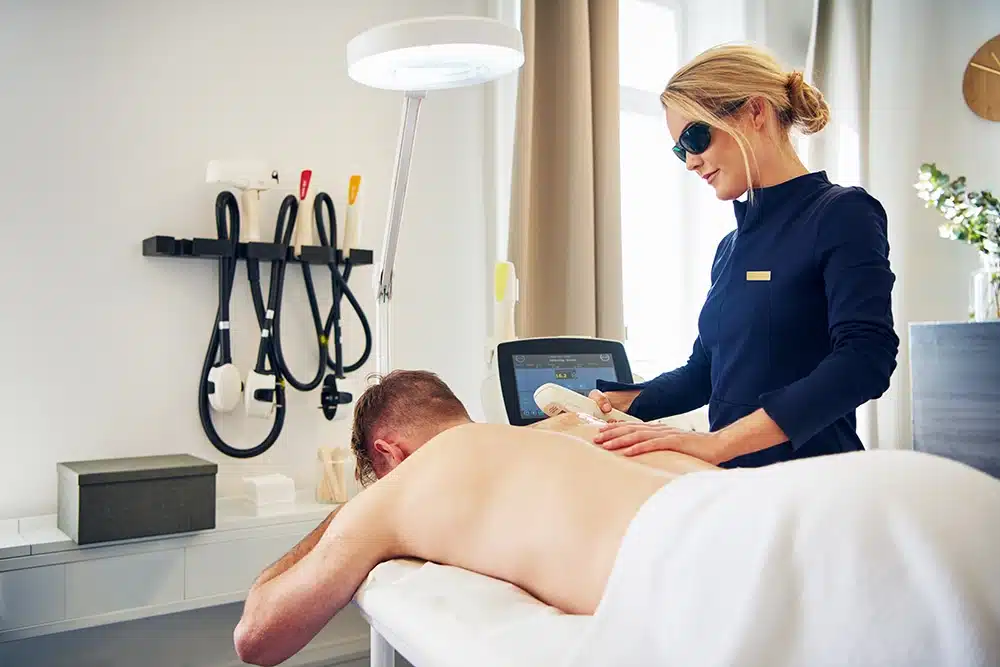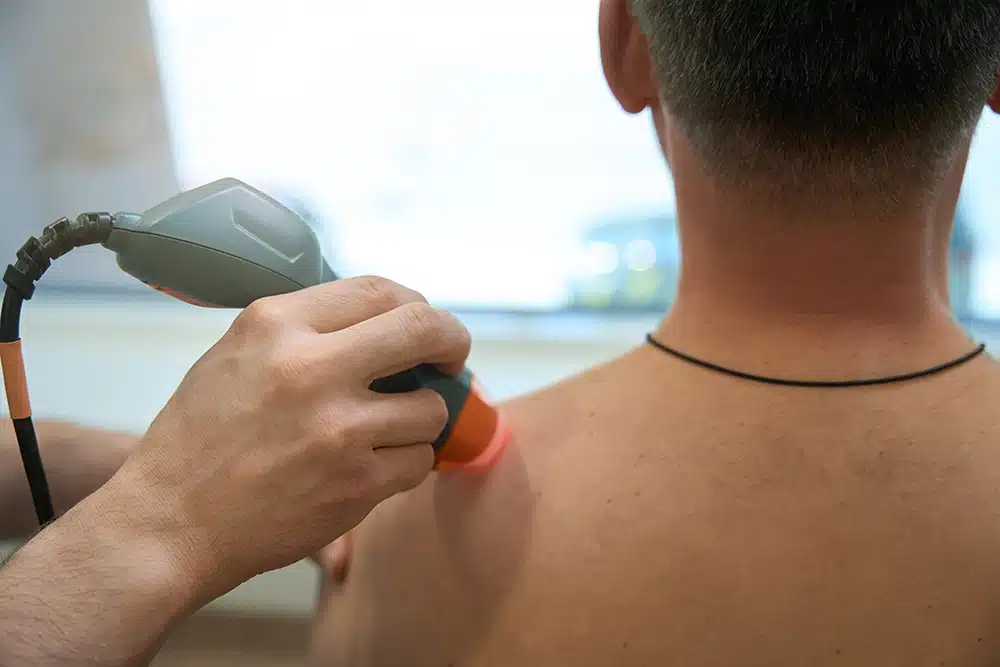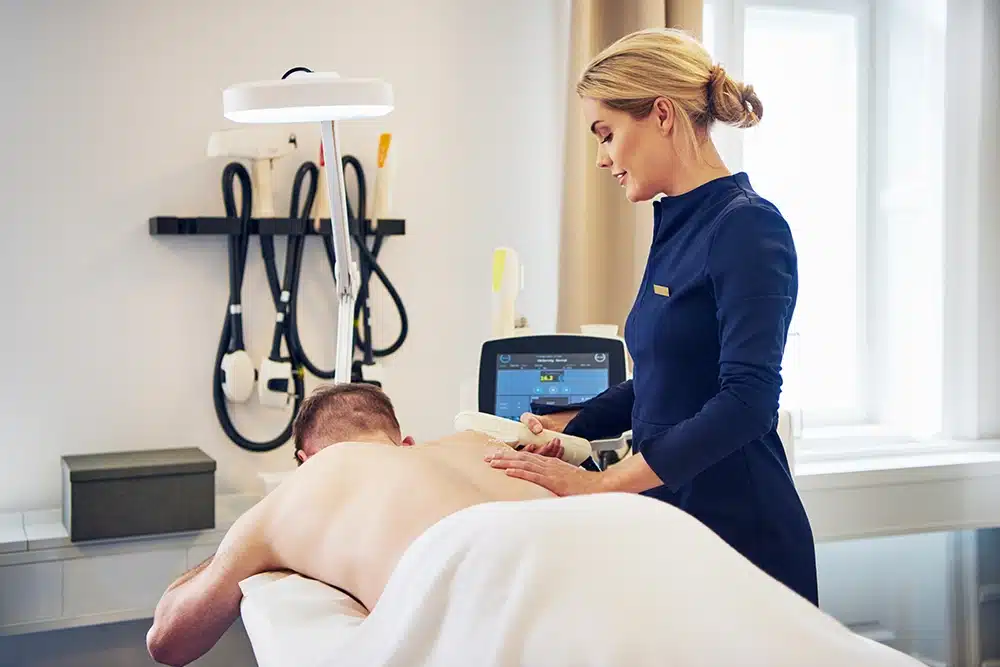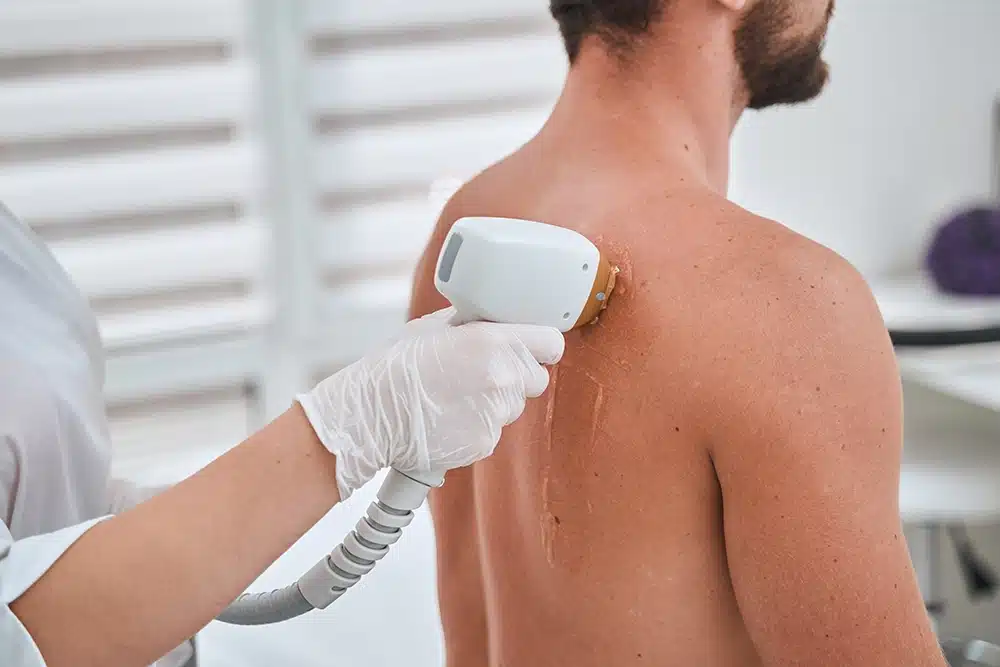
Table of Contents
ToggleChronic Low Back Pain (CLBP) is like an old, unwelcome friend to many. It’s prevalent, persistent, and quite a bother. Conventional treatments often include a cocktail of pain medications, physical therapy, or in severe cases, surgery.
However, a ray of light, quite literally, is emerging as a potential remedy — back pain laser therapy. This article delves into Low-Level Laser Therapy (LLLT), a non-invasive alternative that’s gaining traction in the medical community, especially among Long Island Neuroscience Specialists.
Imagine the sun’s rays coaxing a bud to bloom; that’s somewhat how LLLT works, but under your skin! Back pain laser therapy like the K-Laser or the Erchonia FX 635 laser system, beams specific wavelengths of light to target damaged tissues in the back.
This light energy, much like photosynthesis in plants, kick-starts a process called photobiostimulation, enhancing the body’s natural healing mechanisms.
Unlike its cousin, High Power Laser Therapy, LLLT is gentle but potent. It’s a whisper that ignites a healing conversation among cells, including those in soft tissues, ligaments, cartilage, and nerves.
Back pain laser therapy is like a breath of fresh air for those wary of surgical blades or wary of the potential adverse effects of long-term medication use. Here are the advantages laid out:

Every rose has its thorns, and back pain laser therapy is no exception. Here are a couple of drawbacks:
The side effects are minimal but can include temporary skin redness, irritation, and discomfort.
Not everyone might find a friend in LLLT. Here are some considerations:

From athletes nursing injuries to everyday heroes battling daily chores, back pain laser therapy is making waves. The New York Yankees’ Assistant Athletic Trainer, Steve Donohue, lauds the K-Laser for its effectiveness in treating acute and chronic conditions.
LLLT doesn’t ride solo; there are other treatments for CLBP:

Back pain laser therapy, especially Low-Level Laser Therapy, is a beacon of hope in the gloomy realm of Chronic Low Back Pain. It offers a non-invasive, relatively side-effect-free alternative to traditional treatments. For Long Island Neuroscience Specialists, it’s a tool worth having in the arsenal against CLBP.
While LLLT is promising, it’s crucial to discuss with a healthcare provider to determine its suitability for your specific case. The road to recovery is a personal journey, and what works wonders for one, might not for another.
This comprehensive exploration aims to shed light (pun intended) on back pain laser therapy as a viable treatment option. As we advance in medical technology, the answers to chronic ailments like CLBP might just be a laser beam away.
Note: This article is structured to provide a well-rounded overview, but for a more in-depth understanding, consulting with medical professionals, especially at Long Island Neuroscience Specialists, is highly recommended.
GET IN TOUCH +
285 Sills Road
Building 5-6, Suite E
East Patchogue, NY 11772
(631) 475-5511
184 N. Belle Mead Road
East Setauket, NY 11733
(631) 675-6226
GET IN TOUCH +
285 Sills Road
Building 5-6, Suite E
East Patchogue, NY 11772
(631) 475-5511
184 N. Belle Mead Road
East Setauket, NY 11733
(631) 675-6226
SUBSCRIBE TO OUR NEWSLETTER +
Send us a Google review. Click this link and let us know how we did!
Review us on Yelp too.